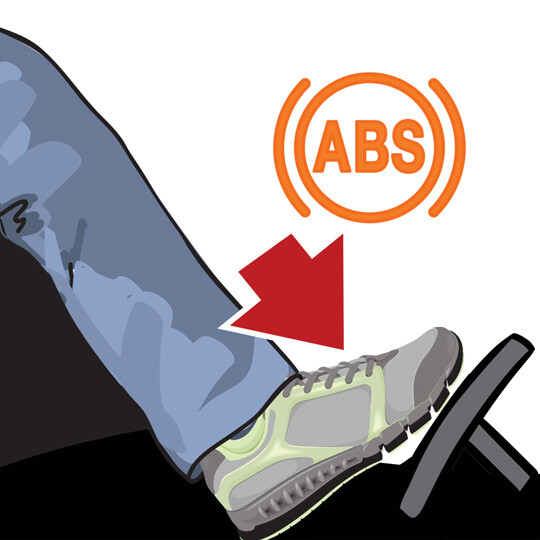
1. APPLY
Apply firm pressure to brake pedal.

Four-wheel anti-lock brakes help you steer as you brake during an emergency.

Wheel sensors detect when your car’s tires begin locking up. Then, they rapidly apply and release (pulse) the brakes to automatically keep your tires from skidding.

When you feel or hear the ABS vibrating, continue to firmly press and hold the brake – then steer to safety.

The most common names for anti-lock braking systems include “anti-lock brakes” and simply “ABS.”
Yes and no. In emergencies, 4-wheel ABS can activate and pump the brakes faster than most drivers could on their own. That’s why on most road surfaces, 4-wheel ABS is more likely to stop your car faster than a car without it.
However, 4-wheel ABS can actually increase stopping distance on some very slippery surfaces, such as lightly packed snow or ice on the road.
No. ABS works best when you firmly hold the brake, and allow it to manage the details of emergency braking.
While 4-wheel ABS is meant to aid steering and is found in nearly all new cars and minivans, rear-wheel-only ABS – which is typically found in some pickup trucks, vans and SUVs – is only designed to help prevent those vehicles from spinning out on slippery surfaces.
Check your owner’s manual to see if you car has 4-wheel ABS, rear-wheel-only ABS or does not have ABS.
Over the past 10 years, most car manufacturers have made ABS standard in their vehicles. The federal government required all new cars to have ABS by September 1, 2011.
Content source: MyCarDoesWhat.org